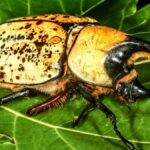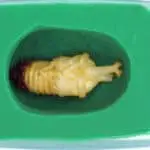If you’re looking for a pet that’s equal parts fascinating and low-maintenance, the giant stag beetle is a perfect choice. These beetles are not only visually striking with their massive pincers and glossy exoskeletons but also incredibly easy to care for. They don’t need much space, don’t smell, and won’t bite—making them ideal for beginners and seasoned insect enthusiasts alike.
What makes them truly captivating is their behavior. Male stag beetles use their impressive pincers to wrestle with rivals, showcasing a natural spectacle that’s both thrilling and educational. Plus, their slow movements and docile nature make them easy to handle and observe up close. Whether you’re drawn to their unique appearance or intrigued by their life cycle, giant stag beetles are sure to become the centerpiece of your exotic pet collection.
- Introduction to Giant Stag Beetles
- How to Get a Giant Stag Beetle
- Caring for Giant Stag Beetle Grubs
- The Dormant Period: What to Expect
- Caring for Adult Giant Stag Beetles
- Breeding Giant Stag Beetles
- Recommended Supplies for Giant Stag Beetles
- Handling Your Giant Stag Beetles
- Common Threats to Giant Stag Beetles
Introduction to Giant Stag Beetles
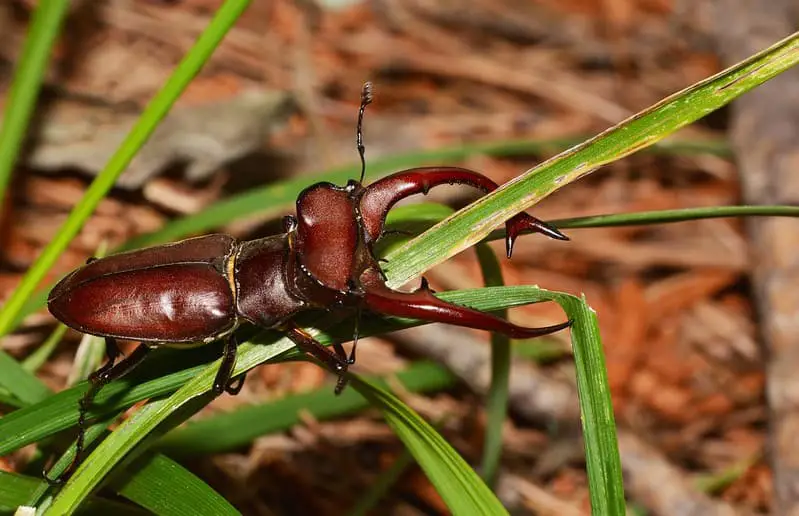
Meet Lucanus elaphus, commonly known as the giant stag beetle. Native to the southeastern United States, these beetles are a marvel of nature with their striking features and fascinating behaviors.
- Natural Habitat: Giant stag beetles thrive in wooded areas with plenty of decaying logs and leaf litter, where they lay their eggs and the grubs feed. They’re most commonly found in states like Alabama, Georgia, and Florida but can be spotted as far north as Michigan.
- Unique Traits: The males are renowned for their massive, antler-like pincers, which they use to duel other males for dominance and mating rights. Females, on the other hand, have smaller bodies and lack the large pincers but are no less vital to their ecosystem’s balance.
Male vs. Female Features
- Males: Larger overall size with long, imposing pincers. These pincers aren’t for biting but for wrestling opponents.
- Females: Smaller body size with tiny pincers, which they use for basic tasks like manipulating food or defending themselves.
With males growing up to 2 inches in length, these beetles make for an impressive and eye-catching addition to any insect collection.
How to Get a Giant Stag Beetle
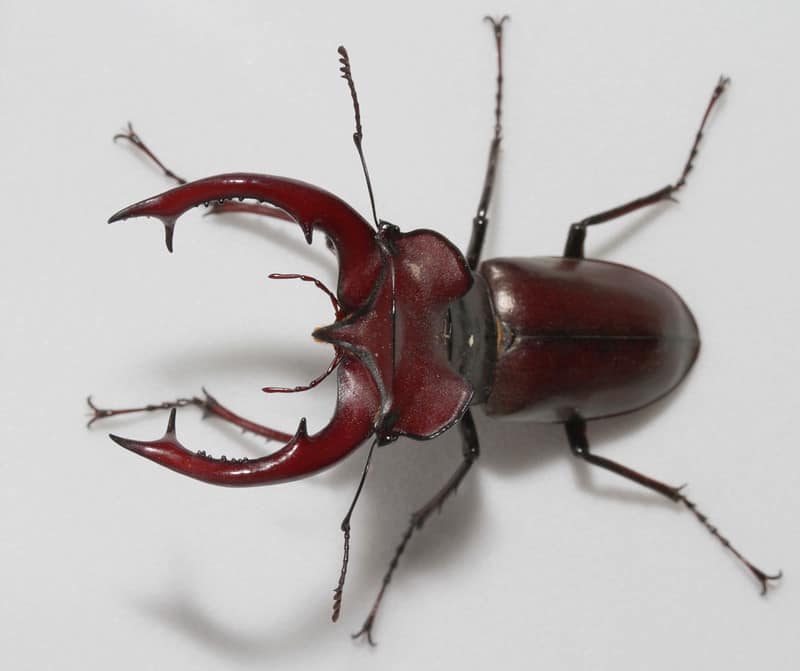
Giant stag beetles may not be as common as other pet beetle species, but with a little effort, you can find them through stores or even in the wild.
Buying from Stores or Online
- Where to Look: Check with local exotic pet stores or online retailers that specialize in beetles. Not all sellers stock giant stag beetles, so you may need to search for specialty breeders.
- Grubs vs. Adults: Grubs are often more affordable but require patience as they mature underground. Adults are ready to admire immediately but have shorter lifespans.
- What to Check:
- Confirm the beetle’s age—adults live up to 9 months, so avoid purchasing one nearing the end of its life.
- Inspect for signs of injury or missing limbs, which can indicate poor health.
- Ask for care sheets from the seller to ensure you’re fully prepared.
Catching Wild Beetles
If you’re up for an adventure, try catching your own giant stag beetles in their natural habitat. Here’s how:
- Find the Right Location: Giant stag beetles are native to wooded areas in states like Alabama, Georgia, and Texas. Make sure you’re in the right region.
- Timing: Go during summer, when adult beetles are most active. They’re especially easy to spot on warm, humid nights.
- Equipment Needed:
- A black light to attract insects.
- A white sheet to create a visible landing zone.
- The Process:
- Set up your black light and sheet in an open, wooded area far from city lights.
- Wait patiently around midnight as insects are drawn to the light. If luck is on your side, you’ll spot a giant stag beetle among the visitors.
Whether you purchase or catch your beetle, be prepared to care for these remarkable creatures and enjoy the journey of raising them.
Caring for Giant Stag Beetle Grubs
Choosing the Right Substrate
The right substrate is essential for healthy grub growth. Two popular options are:
- Flake Soil: A fermented substrate rich in nutrients that grubs feed on. It’s widely available and suitable for most beetle grubs. Consistency is key, so always use the same type to avoid stressing the grubs. Refer to my flake soil recipe.
- Kinshi: A substrate made from fermented wood, popular among Asian stag beetle enthusiasts. Kinshi is known to promote larger stag beetles but requires precise moisture control.
Always keep the substrate moist but not soggy. A good test is to squeeze it—it should clump without dripping water.
Housing Requirements
- Container Size:
- Male grubs: Use a 2-quart (~2 L) container after the first molt and upgrade to a 1-gallon (~4 L) container as they grow.
- Female grubs: A 1-quart (~1 L) container is usually sufficient.
- Ventilation: Ensure proper airflow to prevent mold and bacteria growth.
- Placement: Keep containers away from direct sunlight. Ideal temperature: 68-75°F (20-24°C).
Sexing Grubs
To determine the sex of your grubs (3rd instars only):
- Look at the dorsal side of the abdomen for a visible white or yellow spot, which indicates a female.
- Alternatively, compare head capsule sizes; males have larger head capsules.
Growth Timeline and Molting
- First Molt: Occurs around 6 weeks after hatching.
- Second Molt: About 8 weeks later.
- Final Stage: Grubs spend 9-18 months growing before pupating.
- Pupation: Grubs build chambers at the container’s bottom. Avoid disturbing them during this stage. Adult beetles emerge 6-8 weeks after pupation.
The Dormant Period: What to Expect
After emerging as adults, giant stag beetles enter a dormant period lasting up to 6 months. During this time, they do not eat or mate as their bodies continue to mature internally.
How to Care During Dormancy
- Housing: Keep them in the same container or move them to their adult housing. Ensure ventilation and maintain a stable temperature (65-70°F or 18-21°C).
- Minimize Disturbance: Avoid handling or moving them frequently to prevent stress, which could impact fertility and overall health.
Patience during dormancy ensures your beetles are healthy and ready for mating when the time comes. Read more about dormancy care in this post.
Caring for Adult Giant Stag Beetles
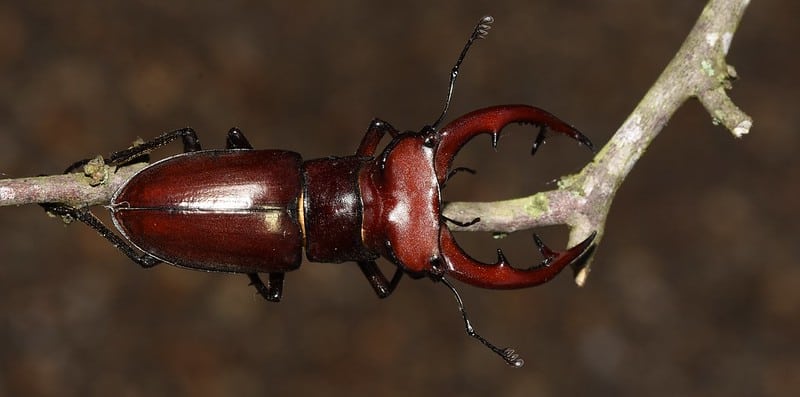
Housing
- Tank Size:
- Single beetle: At least 3 times the beetle’s length, 2 times in width, and 2 times in height.
- Multiple beetles: Increase tank size by 50% for each additional beetle, but avoid housing multiple males together to prevent fights.
- Substrate: Use a mixture of peat and soil (1:1 ratio) or non-soil options like hay or coir. Female beetles enjoy burrowing, so ensure the substrate depth is at least twice the beetle’s thickness.
- Accessories: Add tree bark or branches for climbing. Cover the tank with a ventilated lid to prevent escapes.
Feeding
- Fruits: Offer small slices of banana, orange, apple, or pineapple. Replace daily to prevent mold growth.
- Beetle Jelly: A convenient, long-lasting alternative with added nutritional benefits like improved longevity and fertility. You can buy it or make your own.
Adjust food portions based on beetle consumption to minimize waste. Adult beetles typically live up to 9 months when properly cared for.
Breeding Giant Stag Beetles
Pairing Tips
- Wait until both beetles have exited their dormant period before introducing them.
- Place the male and female in the same container with plenty of space and substrate for hiding.
- Monitor the process to ensure the male does not harm the female.
- Separate them and try again after a few days if they refused to mate. Move the female to the nursery chamber after mating.
Setting Up a Nursery Chamber
- Use a 16-gallon (~60 L) container filled with 8 inches (~20 cm) of flake soil.
- Add 1-2 pieces of rotten wood soaked overnight and air-dried to provide an ideal egg-laying site. Remove the tree bark so that the beetles can easily chew through the wood for oviposition.
- Ensure the container is moist but not waterlogged.
Removing the Female
- Remove the female after one month to prevent her from accidentally eating the eggs or grubs.
- Wait until the female surfaces before attempting to remove her to avoid disturbing the eggs.
Retrieving Grubs
- Check the substrate and rotten wood for grubs one month after removing the female.
- Transfer grubs to kinshi bottle or a communal tank with fresh flake soil to ensure proper growth.
Recommended Supplies for Giant Stag Beetles
Here’s my recommended supplies that you can consider getting for your giant stag beetle. Note that I get a small commission when you buy the items through the links in this page. This helps me to maintain the site without incurring additional costs to you.
- Housing for adult beetle
- Substrates for adult beetles
- Beetle Jelly
- Nursery housing
- Housing for grubs
- Heat mat
- Thermometer & Hygrometer
Handling Your Giant Stag Beetles
Best Practices
- Always hold beetles by their thorax to avoid injury to their legs.
- Be gentle with grubs and avoid dropping them as they are fragile.
- Avoid pulling adult beetles off surfaces forcefully to prevent leg injuries.
Common Threats to Giant Stag Beetles
Substrate Quality
- Ensure all substrate is pesticide- and fertilizer-free.
- Bake substrate before use to eliminate pathogens.
Pests and Mites
- Watch for tiny mites that may parasitize eggs or grubs.
- Replace substrate and clean containers if mites are detected.
Environmental Hazards
- Maintain proper moisture levels to prevent mold and ensure beetle health.
- Keep housing away from direct sunlight and extreme temperatures.
With these tips, your giant stag beetles will thrive at every stage of their life cycle!

